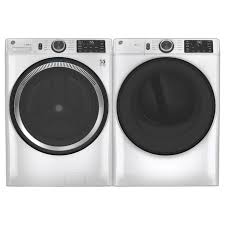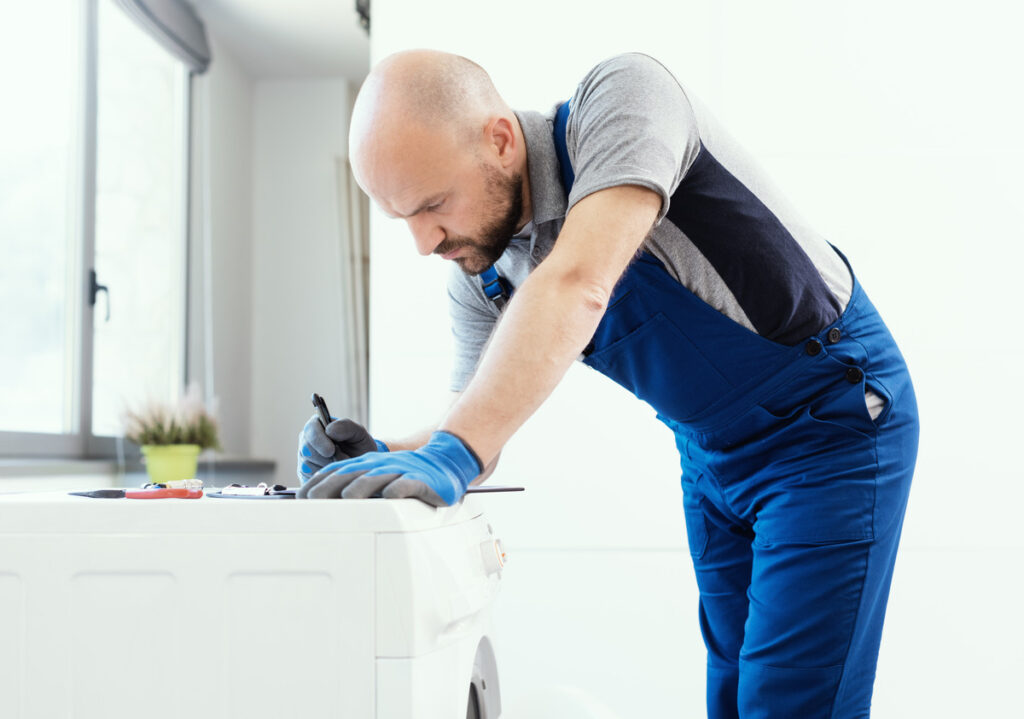Working time:
Monday to Saturday: 8:00 A.M. – 7:00 P.M.
Sunday: 9:00 A.M. - 4:00 P.M.
Working time:
Monday to Saturday: 8:00 A.M. – 7:00 P.M.
Sunday: 9:00 A.M. - 4:00 P.M.
Client Services:
Client Services:
GE Stackable Washer & Dryer Repair
GE stackable washer and dryer units offer an efficient solution for compact spaces while delivering reliable performance. However, even these advanced appliances can encounter issues like failure to start, incomplete cycles, or ineffective drying. Prompt troubleshooting and regular maintenance are key to ensuring your GE stackable washer and dryer continues to operate at peak performance. Below, we cover common problems, troubleshooting methods, and solutions to keep your appliance in top condition.

Common Problem
GE stackable washer and dryer units may face challenges such as water not draining, drum not spinning, and inconsistent drying. These issues often arise due to clogged filters, damaged belts, or blocked vents.
When the washer fails to drain or spin properly, it may point to a malfunctioning pump or an unbalanced load. Drying issues, such as clothes remaining damp, can stem from restricted airflow or a faulty heating element. Additionally, problems like excessive vibrations or water leaks can result from worn-out seals, loose components, or overloading the machine.
GE Stackable Washer & Dryers Troubleshooting
Start by cleaning the drain pump filter to remove debris that might be obstructing water flow. Check the drain hose for kinks or clogs and ensure it’s properly installed at the correct height. If the problem persists, the drain pump may require replacement.
Inspect the heating element for visible damage or wear, and test it for continuity. Blocked airflow can also reduce heating efficiency; clean the lint filter and vent hose thoroughly to restore proper ventilation. Additionally, test the thermal fuse and cycling thermostat for faults and replace them if needed.
An unbalanced load can prevent the drum from spinning correctly. Redistribute clothes evenly in the drum to balance the load. If the issue continues, inspect the drive belt for wear or slippage and replace it if necessary. The lid switch should also be checked, as a faulty switch can stop the spin cycle.
Ensure the vent hose is clear of blockages, as restricted airflow is a primary cause of extended drying times. Inspect the blower wheel for damage or obstructions and verify that the cycling thermostat is functioning correctly. Regularly clean the lint trap and consider replacing worn or damaged components.
Excessive shaking or vibrations can result from overloading or an uneven surface. Check that the appliance is level using a spirit level, and adjust the feet as needed. Inspect the shock absorbers and suspension springs for wear and replace them if required.
Confirm that the unit is securely connected to a working power supply and that the circuit breaker has not tripped. Ensure the washer or dryer door is fully closed, as most units won’t start if the door latch isn’t engaged. Test the start switch and control board for malfunctions, replacing faulty parts as necessary.
Top 6 Problems and Solutions for your Stackable washer & dryer
Washer Not Draining Water
1. Clean the drain pump filter
2. Check the drain hose for clogs
3. Verify proper installation of the drain hose
4. Test the drain pump for functionality
5. Replace any defective components
Dryer Not Heating Effectively
1. Inspect the heating element for damage
2. Clean the lint filter and vent hose
3. Test the thermal fuse for continuity
4. Check the cycling thermostat for faults
5. Replace worn parts
Drum Not Spinning in Washer
1. Redistribute clothes to balance the load
2. Inspect the drive belt for wear
3. Check the lid switch for proper operation
4. Test the motor coupling for damage
5. Replace faulty components
Clothes Taking Too Long to Dry
1. Clean the lint trap and vent system
2. Inspect the blower wheel for obstructions
3. Test the cycling thermostat
4. Ensure proper airflow through the vents
5. Replace malfunctioning parts
Excessive Vibrations During Operation
1. Level the appliance using adjustable feet
2. Avoid overloading the drum
3. Inspect shock absorbers for wear
4. Tighten loose components
5. Replace worn suspension springs
Appliance Not Starting
1. Verify the power supply connection
2. Check the door latch alignment
3. Test the start switch for faults
4. Inspect the control board for damage
5. Replace defective components
Additional GE Stackable Washer & Dryer Troubleshooting Techniques
Start by performing routine maintenance, such as cleaning the lint filter and drain pump filter, to prevent common issues like blockages and poor performance. Regular upkeep ensures efficient operation and reduces wear on components.
Inspect the washer’s and dryer’s hoses, seals, and belts for signs of damage or leaks. Addressing minor issues early can prevent more significant problems and costly repairs. Proper care of these parts will also extend the appliance’s lifespan.
For ongoing problems, like excessive noise or incomplete cycles, focus on the moving parts such as the drum rollers, bearings, and suspension springs. Keeping these components in good condition and promptly replacing worn-out parts will maintain your GE stackable washer and dryer’s efficiency for years to come.

Schedule an Appointment Online
Contact us:
Phone Number
+1 (855) 879-9929
info@washer-dryer-repair-service.com
Working Hours
Mon – Sat: 8AM – 7PM
Sun: 9AM – 4PM
